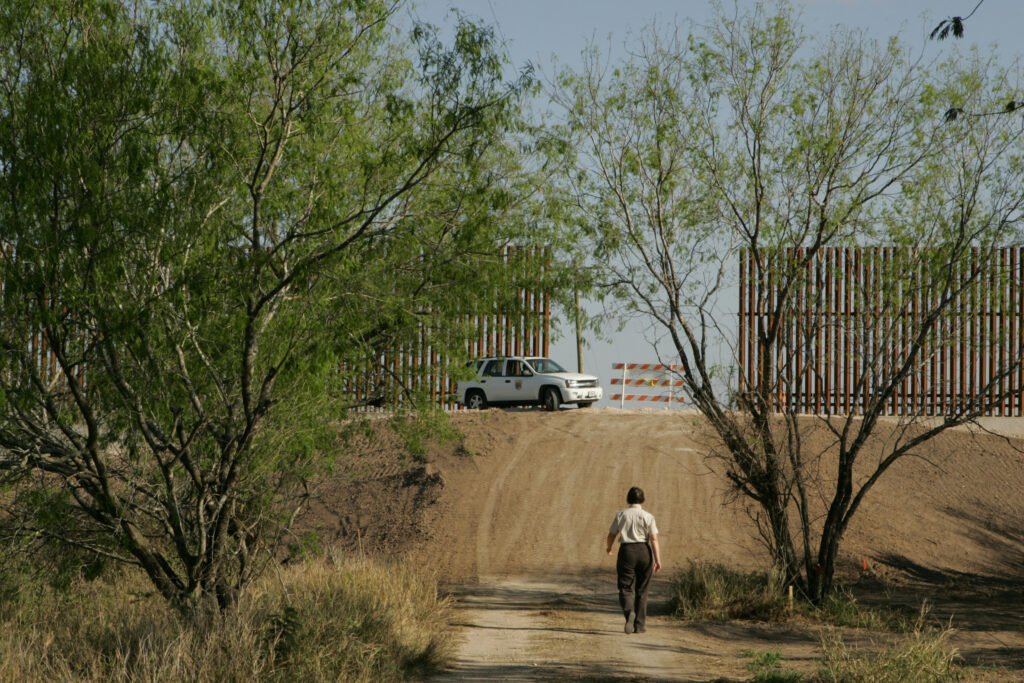Border Wall Construction in Lower Rio Grande Valley: Environmental and Legal Implications
The Department of Homeland Security (DHS) has recently announced that Secretary Kristi Noem has waived several key environmental protections, including those under the Endangered Species Act and the National Environmental Policy Act (NEPA). This decision is aimed at facilitating the swift construction of a border wall within the Lower Rio Grande Valley National Wildlife Refuge in Texas.
Background and Context
The impetus for this construction dates back to appropriations made during the first Trump administration. With funding set aside for the border wall in the Rio Grande Valley, the DHS has shifted its focus to the biodiverse Starr County region as a critical site for further border fortifications.
Established in 1979, the Lower Rio Grande Valley National Wildlife Refuge was created to preserve biodiversity in an area that has suffered significant habitat loss. The refuge serves as a crucial wildlife corridor along the Rio Grande, safeguarding endangered species such as the ocelot and supporting diverse avian populations, including green jays and the unique chachalaca.
Legal Waivers and Their Consequences
With Noem’s recent waivers, the federal government is no longer required to comply with significant environmental laws like the Clean Water Act and the Migratory Bird Conservation Act during the construction process. This authority to bypass federal regulations stems from the Secure Fence Act of 2006, which has been utilized by both Democratic and Republican administrations to expedite border wall constructions. Just last June, waivers were issued for 36 miles of border wall in Arizona and New Mexico.
Conservationists argue that the administration lacks a compelling national security rationale for erecting a wall in this sensitive wildlife refuge. They caution that the construction will jeopardize various wildlife species and disconnect local communities from the Rio Grande, which is essential for recreation and sustenance.
Community Responses
Laiken Jordahl, a Southwest conservation advocate with the Center for Biological Diversity, criticized the federal government for prioritizing border security over conservation goals. “The government owns this land for the sake of conservation,” he remarked, lamenting that the current administration is willing to compromise ecological integrity for infrastructure development.
Despite requests for further comment, DHS has remained silent on the community and environmental concerns surrounding this decision. In addition to the environmental laws, the waivers also dismiss the Archaeological and Historic Preservation Act, the National Trails System Act, and the Native American Graves Protection and Repatriation Act.
The Broader Landscape of Border Wall Construction
Funds appropriated for border wall construction specifically in the Rio Grande Valley date back to 2019, reflecting ongoing efforts to fortify the U.S.-Mexico border. With private land seizures often met with resistance from local landowners, federal lands within wildlife refuges present a more straightforward option for construction.
Texas is simultaneously pursuing its own border wall initiatives, albeit with limited progress. Under the Biden administration, similar waivers were again implemented in Starr County earlier this year.
In her Federal Register authorization, Noem emphasized the Rio Grande Valley as an "area of high illegal entry," citing that over 1.5 million undocumented immigrants were apprehended in the Customs and Border Protection’s Rio Grande Valley sector between fiscal years 2021 and 2025. Despite this assertion, there has been a noticeable decrease in migrant apprehensions recently, with reports of fewer than 1,000 monthly encounters in the sector as of June and July—an area spanning over 34,000 square miles.
Critics like Scott Nicol, an artist and activist in the Rio Grande Valley, argue that the Trump administration seeks federal land for border wall construction because it circumvents the challenges associated with seizing private property. He notes that there is no logical basis for targeting the wildlife refuge, stating that the wall serves more as a "spectacle" than a tactical necessity.
Environmental Concerns and Flood Risks
The proposed sites for wall construction are located within the Rio Grande floodplain. Under a treaty established in 1970 between the U.S. and Mexico, both nations are committed to ensuring that construction along the Rio Grande does not obstruct the river’s flow or disrupt floodwaters. Previous border wall proposals have faced objections from Mexican authorities based on this treaty.
Nicol has expressed skepticism regarding the DHS’s commitment to adequately consider flood risks during the construction of the wall, suggesting that concerns will only be addressed in the event of a catastrophic flood.
The International Boundary and Water Commission (IBWC) is tasked with reviewing construction projects along the border, including potential flood impacts. A spokesperson recently confirmed that the IBWC supports the actions taken by the DHS to secure the border.
Conclusion
The recent move to expedite border wall construction in the Lower Rio Grande Valley raises significant questions surrounding environmental protections and community rights. As construction efforts unfold, the local ecosystem and community interests hang in the balance, highlighting the complex intersections of immigration, national security, and environmental conservation.
For further reading about the implications of border wall construction, explore the details on Center for Biological Diversity and International Boundary and Water Commission.


